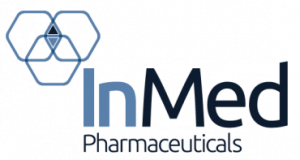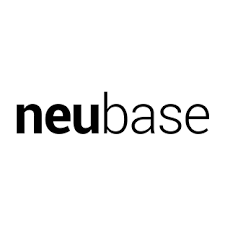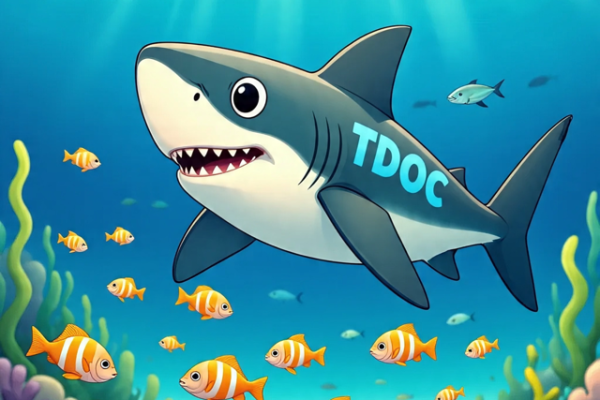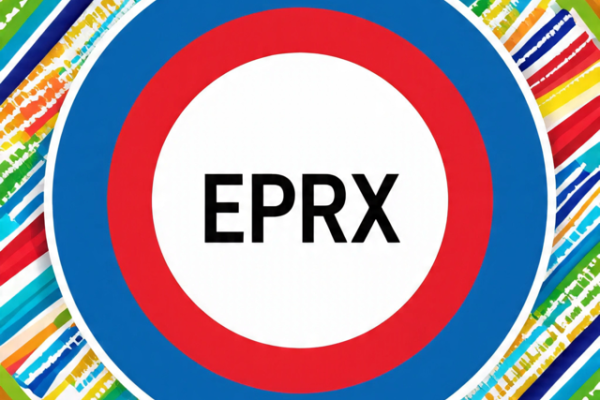“Education is not only a ladder of opportunity, but it is also an investment in our future.” – Ed Markey, American – Politician Born: July 11, 1946
According to our good friends at Wikipedia, a Santa Claus rally is a calendar effect that involves a rise in stock prices during the last 5 trading days in December and the first 2 trading days in the following January. According to the 2019 Stock Trader’s Almanac, the stock market has risen 1.3% on average during the 7 trading days in question since both 1950 and 1969. Over the 7 trading days in question, stock prices have historically risen 76% of the time, which is far more than the average performance over a 7-day period.
On Monday, we trended higher & seem to be still on course for this year’s version of a Santa Claus Rally as all indices continued to rise strongly across the board. The macroeconomic schedule did not produce anything to influence investors and the yield curve was fairly quiet with the 2-yr yield closing at .70% up 1 basis point & the 10-yr yield falling 1 basis point to close at 1.48%. The U.S. Dollar Index moved up by .1% to 96.08, gold prices rose again to close at $1,813/oz., +$2/oz., silver closed at $23.06, +$.14, Bitcoin (BTC) closed at $50,793.86, -.03% & ole prices closed above $75 at $75.56/bbl.
In turn, the S&P 500 closed at 4,791.19 (+1.38%) achieving yet another new record high. All 11 sectors closed in the green with the information technology & energy sectors advancing +2.2% & the real estate sector moving up +2% to lead the way. The Dow 30 closed above the 36k level for the first time in awhile at 36,302.38 (+.98%) & the Nasdaq is eyeing the 16k level as it closed at 15,871.26 (+1.39%). The small caps on the Russell also moved higher closing at 2,261.46 (+.89%), while the micro caps performed well, but off the pace, as the iShares Micro-Cap ETF (IWC) closed at $141.43, +.64%. The SPDR S&P Biotech ETF (XBI), a barometer of the smaller biotech stocks, fell back below the recent $116 resistance level & closed lower at $115.17, -2.58% as tax selling continued in this beaten down, but value rich area in the markets. The 52-wk range is $106.88 – $174.79.
The yield curve was fairly quiet with the 2-yr yield closing at .70% up 1 basis point & the 10-yr yield falling 1 basis point to close at 1.48%. The U.S. Dollar Index moved up by .1% to 96.08, gold prices rose again to close at $1,813/oz., +$2/oz., silver closed at $23.06, +$.14, & Bitcoin (BTC) closed at $50,793.86, -.03%.
VP WATCHLIST UPDATES
Apple (AAPL) closed at $180.33, +2.3%. Did you know that Mariah Carey has earned a ~$60M in streaming royalties for her “All I Want For Christmas Is You?”
Tesla (TSLA) closed at $1093.94, +2.52%. Last week, it was confirmed that Tesla will change its touchscreen available video game and make it so that drivers cannot play it while the car is in motion. According to Bloomberg, Elon Musk recently stated on Twitter that he’s “almost done” trimming his stake in Tesla Inc. hours after telling a satirical website that he already reached his target of reducing his stake in the electric-auto maker by 10%. Musk, now 50 yers old, is the world’s richest person and stands atop the Bloomberg Billionaires Index with a fortune of $260.9B.
The Walt Disney Company (DIS) closed at $152.80, -.54%. Last week, Horacio Gutierrez was named Senior Executive Vice President, General Counsel and Secretary of The Walt Disney Company. Mr. Gutierrez joins Disney from Spotify, where he has served as Head of Global Affairs and Chief Legal Officer. His appointment is effective February 1, 2022, and he will report directly to Mr. Chapek. Mr. Gutierrez will succeed longtime Disney veteran Alan Braverman who, as was announced in July, is retiring after nearly two decades as General Counsel. Prior to joining Spotify, Mr. Gutierrez was Corporate Vice President and General Counsel for Microsoft, overseeing the company’s legal affairs around the world, including support of the complete lifecycle of Microsoft’s products and services, from research and development to business development activities, M&A, litigation, legal compliance, and cybercrime prevention. He initially joined Microsoft in 1998 as Corporate Attorney, LATAM, and held a number of positions of increasing responsibility throughout the legal department during his 17-year tenure with the company, including Associate General Counsel, EMEA from 2002 to 2006; Deputy General Counsel, Intellectual Property and Licensing Group from 2006 to 2014; and Deputy General Counsel, Products and Services Group from 2014 to 2015. Disney will hold its annual meeting of shareholders on Wednesday, March 9, 2022 at 1:00 p.m. ET / 10:00 a.m. PT by virtual meeting and will be made available via webcast at
www.disney.com/investors.

On the small side, Atossa Therapeutics (NASDAQ: ATOS), a clinical-stage biopharmaceutical company seeking to develop innovative proprietary medicines in oncology and infectious disease with a current focus on breast cancer and COVID-19, rose to an intraday high of $1.80 prior to closing at $1.70, -5.56% on 4.639M shares of trading volume. On Dec. 22,
Atossa announced that it has initiated enrollment of its Phase 2 clinical study of oral Z-Endoxifen in Sweden. Participants in the study will be premenopausal women with elevated mammographic breast density, which is an emerging public health issue affecting more than 10 million women in the United States and many more worldwide. “
This is an extremely important milestone as it marks the next phase of developing our proprietary Z-Endoxifen,” said Steven Quay, M.D., Ph.D., Atossa’s Chairman and CEO.
“This study will help determine the relationship between daily doses of Endoxifen and reduction in breast density and will help us further assess safety and tolerability. We look forward to providing progress updates as they become available.” Physician-Scientist and CEO of Atossa, Steven Quay, MD, PhD, recently published an e-print on his research into a new coronavirus, named BANAL-236, reported by the Institut Pasteur in September 2021. At the time, BANAL-236 was the first bat coronavirus with high homology to SARS-CoV-2 that could directly infect human cells using the same receptor that SARS-CoV-2 uses. The new research reports that BANAL-236 has evolved the ability to infect human cells by an unknown mechanism that violates over 40 years of coronavirus research.
The COVID-19 e-print is available here and has also been submitted to Nature.
“When I read the paper from the Institut Pasteur and looked at the virus, I immediately assumed there was an error in either the way the sequence was assembled or a mix up in the lab with another virus to explain the infectivity,” Quay said. “
I contacted the Institut Pasteur with my findings and was deeply disturbed to learn that there was not, in fact, some simple mistake had occurred to explain things. I now knew we were in uncharted waters with a virus that is missing eight key elements that have been shown, over 40 years of research, to be required for growth.” Atossa management also recently presented at
“A Town Hall Q&A Event With Atossa Therapeutics Management Team” with Tribe Public.
You can view it clicking here. Atossa also announced recently that it had completed a pre-investigational new drug (PIND) meeting with the FDA to obtain input from the FDA on pre-clinical, clinical, manufacturing and regulatory matters in the U.S. for Atossa’s proprietary Z-endoxifen to treat breast cancer in the neoadjuvant (prior to surgery) setting.
On Dec. 13, Fate Therapeutics, Inc. (NASDAQ: FATE), a clinical-stage biopharmaceutical company dedicated to the development of programmed cellular immunotherapies for patients with cancer, showcased positive interim Phase 1 data from the Company’s FT596 program for patients with relapsed / refractory B-cell lymphoma (BCL) at the 63rd American Society of Hematology (ASH) Annual Meeting and Exposition. FT596 is the Company’s off-the-shelf, multi-antigen targeted, iPSC-derived natural killer (NK) cell product candidate derived from a clonal master induced pluripotent stem cell (iPSC) line engineered with three anti-tumor functional modalities: a proprietary chimeric antigen receptor (CAR) optimized for NK cell biology that targets B-cell antigen CD19; a novel high-affinity, non-cleavable CD16 (hnCD16) Fc receptor that has been modified to prevent its down-regulation and to enhance its binding to tumor-targeting antibodies; and an IL-15 receptor fusion (IL-15RF) that augments NK cell activity. “The interim dose-escalation clinical data from our FT596 program in relapsed / refractory B-cell lymphoma demonstrate that off-the-shelf, iPSC-derived CAR NK cells can bring substantial therapeutic benefit to heavily pre-treated patients in urgent need of therapy, with high response rates and meaningful duration of responses,” said Scott Wolchko, President and Chief Executive Officer of Fate Therapeutics. “We are particularly pleased with the therapeutic profile that has emerged with FT596 in combination with rituximab, where over half of the patients treated with a single dose of FT596 at higher dose levels achieved a complete response with a favorable safety profile that is clearly differentiated from CAR T-cell therapy. We look forward to assessing a two-dose treatment schedule for FT596 to further define its potential best-in-class therapeutic profile and ability to reach more patients, including those earlier in care.” Shares of FATE closed at $57.86, -10.07%.

InMed Pharmaceuticals Inc. (NASDAQ: INM), a leader in the development, manufacturing and commercialization of rare cannabinoids, closed at $1.41, -6% after hitting an intraday high of $1.50. On Dec. 20, InMed announced that a peer-reviewed scientific article entitled “Cannabinol Modulates Neuroprotection and Intraocular Pressure: A Potential Multi-Target Therapeutic Intervention for Glaucoma”, has been published in Biochimica et Biophysical Acta (BBA – Molecular Basis of Disease), a leading international journal focused on biochemistry and molecular genetics of disease processes and models of human disease in the area of aging, cancer, metabolic-, neurological-, and immunological-based diseases. The peer-reviewed article highlights research evaluating the use of cannabinol, or CBN, as a potential treatment option for glaucoma. Several studies were conducted to evaluate the survival of retinal ganglion cells, modulation of intraocular pressure and its effects on extracellular matrix proteins using in vitro and in vivo glaucoma models. These studies resulted in two key findings: first, CBN may promote neuroprotection of cells in the retina that are responsible for vision; and second, CBN may normalize intraocular pressure by attenuating changes in the extracellular matrix proteins. The article also reports on the comparison of CBN with other cannabinoids, including cannabidiol (CBD) and tetrahydrocannabinol (THC), with results indicating that CBN has a stronger effect and broader neuroprotective therapeutic range. These observations elucidate the therapeutic potential for CBN in the treatment of glaucoma.
INmune Bio, Inc. (NASDAQ: INMB), a clinical-stage immunology company focused on developing treatments that harness the patient’s innate immune system to fight disease, recently
presented data at the San Antonio Breast Cancer Symposium showing mucin 4 (MUC4) expression predicts worse survival and is a treatment resistance factor in women with triple negative breast cancer (TNBC). INB03, a DN-TNF therapy, can reverse TNBC treatment resistance by decreasing expression of MUC4 and reducing immunosuppression in the tumor microenvironment (TME) by increasing anti-tumor macrophage phagocytosis and increasing lymphocyte function in the TME. The poster will be presented by Dr. Roxana Schillaci, Instituto de Biología y Medicina Experimental, Buenos Aires, on December 10th. RJ. Tesi, M.D, Chief Executive Officer of INmune Bio, commented, “We are excited to have Dr. Schillaci present these data that expand on her previous findings on the role of MUC4 expression which predicts worse survival and resistance to therapy in HER2+ breast cancer therapy. Now, in both TNBC and HER2+ breast cancer, MUC4 predicts resistance to immunotherapy and an immunosuppressive TME that can be overcome with INB03.” Treatment with INB03 in murine models of breast cancer improves macrophage anti-tumor phagocytic activity, lymphocyte infiltration and function suggesting improved response to combination therapies of INB03 with inmunotherapy. Shares of INMB closed trading today at $1o.43, -3.96% after hitting an intraday high of $10.99.

Shares of INVO Bioscience, Inc. (NASDAQ: INVO), a medical device company focused on commercializing the world’s only in vivo culture system (IVC), INVOcell®, closed at $3.60 and has traded up to $3.84, +6.67% in the aftermarket, but still well off of its 52-wk high of $12.30. A sell side analyst named Kyle Bauser, Ph.D. at Colliers Securities recently published his Buy Rating Report with a $6 Price Target. On Dec. 16,
INVO Bioscience, Inc. announced that it has entered into an expanded agreement with Ovoclinic, a group of clinics specialized in assisted reproductive treatments with four locations across Spain (Madrid, Marbella, Málaga, Ceuta) and collaborating centers around Europe, to accelerate adoption of INVOcell within their markets. The agreement includes the expanded adoption of INVOcell within Ovoclinic locations as well as establishing an INVO Center of Excellence for future training for the European Market. Cristina Gonzalez, embryologist and Quality Manager of Ovoclinic laboratories stated,
“After several successful trials implementing the exciting INVOcell fertility treatment, Ovoclinic aims to provide its patients with this effective alternative to the processes used so far in Spain in the field of reproductive medicine. We consider INVOcell to be an effective method of natural reproduction that involves the future mother at the very first moment of the process. We are confident that this innovative treatment will help many patients to choose this new alternative solution to achieve their dream of forming a family by actively participating in the reproductive process.” According to the World Bank, Spain, with total population of approximately 47 million people, has one of the lowest fertility rates in Europe, affecting approximately 15% of the population, or one in seven couples of reproductive ages. According to reports, in 2010, there were approximately one million couples requesting assisted reproductive treatment, however only 22% received one or more assisted reproductive treatment cycles. The average waiting time for an IUI or IVF cycle in a public health facility was 339 days. Ovoclinic reports that they maintain the best technical and human resources to deal with all kinds of infertility problems along with the simplest and most natural treatments to the most complex and advanced techniques pioneered in Spain. Ovoclinic also works in partnership with Ovobank, the first European Donor Egg Bank in Europe.
Shares of Hecla Mining Company (NYSE: HL), the largest silver producer in the United States closed at $5.25, -.38%.

Shares of NeuBase Therapeutics (NASDAQ: NBSE), a biotechnology platform company Drugging the Genome™ to address disease at the base level using a new class of precision genetic medicines, closed at $2.90, -5.23% after hitting an intraday high of $3.05. On Dec. 23, NeuBase reported its financial results for the fiscal year ended September 30, 2021, and other recent developments. “NeuBase is focused on significantly reducing the burden of untreatable morbidity and mortality caused by rare and common diseases across the globe. To achieve this goal, we designed, built, and validated a new precision genetic medicines platform technology that can uniquely drug the double-stranded human genome and address disease at the root of causality without many of the limitations of early precision genetic medicine technologies. We are poised to file our first Investigational New Drug (‘IND’) applications with the U.S. Food and Drug Administration (‘FDA’) beginning in calendar year 2022 and intend to scale into additional indications with increasing speed and efficiency thereafter,” said Dietrich A. Stephan, Ph.D., Founder, Chief Executive Officer, and Chairman of NeuBase. “This past year, we validated the ability of our technology in proof-of-concept studies to directly drug the double-helix of the human genome, including difficult double-stranded structures of RNA targets, and engage with mutant genes to resolve most causal mechanisms of disease. The validation of our platform’s capabilities included data describing that we have overcome many limitations of early precision genetic medicine technologies, such as biodistribution, tolerability, selectivity, manufacturability, durability, and scalability. We also presented data that our delivery shuttle enables compounds to elicit pharmacologic effects in multiple tissues, including in the brain and muscle, after subcutaneous administration in preclinical animal models,” said William Mann, Ph.D., M.B.A., Chief Operating Officer of NeuBase. “We recently nominated the development candidate for our myotonic dystrophy type 1 (DM1) program, which we believe has the potential to be a best-in-class therapy that offers a patient-friendly route of administration, a whole-body solution for the muscle, heart, and brain manifestations of the disease. Furthermore, the mechanism of action of our development candidate is designed to engage with the toxic RNA hairpin structure to release the splicing proteins, restoring normal RNA splicing and downstream protein production, including DMPK. We have initiated IND-enabling studies for this candidate, with data read-outs expected across CY2022. We expect these data will support the submission of an IND filing to the FDA in the fourth quarter of CY2022,” stated Sandra Rojas-Caro, M.D., Chief Medical Officer of NeuBase. “As a result of the nomination of our DM1 program candidate, we established CMC expertise at our new facility in Cambridge, Massachusetts that is co-located with our clinical development team, finalized the formulation of our development candidate to enable systemic routes, and completed process development. We also scaled-up manufacturing in-house and with contract manufacturing partners to support non-clinical toxicology, product stability, and Phase 1/2 clinical trials,” said Tony Rossomando, Ph.D., Chief Technology Officer of NeuBase. Dr. Stephan concluded, “In parallel, we are making significant progress in our therapeutic program for Huntington’s disease. For example, we have illustrated with preclinical in vivo data that our proprietary delivery technology allows our genome-targeting compounds to advance beyond intrathecal delivery and enabling a systemically administered allele-selective therapy, overcoming challenges seen with other programs. Furthermore, preclinical data show that our PATrOL™-enabled compounds can silence activating KRAS point mutations in vivo to inhibit protein production, which has the potential to target G12D and G12V, the two most common and historically ‘undruggable’ cancer-driving point mutations that represent the majority of KRAS tumors. We believe these data set the stage for a potentially first-in-class precision genetic medicine approach for oncology capable of selectively targeting mutations at the single-base level.”

Shares of Cue Health (Nasdaq: HLTH) rose to close at $15.66, +21.87% today. Cue Health is a healthcare technology company that announced on Dec. 21 its first airline partnership with Air Canada to provide U.S.-based passengers with access to Cue’s molecular COVID-19 test: the most accurate* self-test on the market. Air Canada’s U.S.-based customers can now meet Canada’s specific travel testing requirements using Cue’s COVID-19 tests, which can be purchased three, six, or 10 at a time along with the reusable and portable Cue Cartridge Reader, which processes test results in about 20 minutes. Under this partnership, each Cue test comes with access to a video proctoring session within the Cue Health App. The companies are working to create a fully French/English bilingual experience and expect to make the service available to Air Canada’s Canadian-based customers in early 2022. As a Nucleic Acid Amplification Test (NAAT), Cue’s molecular COVID-19 test meets Canada’s testing entry requirements, as Canada is one of the growing number of countries that accept molecular NAAT test results for entry. These travel entry requirements are more stringent than those countries that accept rapid antigen test results.
Shares of Sweetgreen, Inc. (SG) closed at $ 35.03, +11.70% on Monday. Sweetgreen is a company that operates 140+ restaurants with 5,000 team members in order to create plant-forward, seasonal, and earth-friendly meals from fresh ingredients and produce that prioritizes organic, regenerative, and local sourcing. On Nov.17, Sweetgreen announced the pricing of its initial public offering of Class A common stock at the price to the public of $28 per share. Goldman Sachs & Co. LLC and J.P. Morgan are acting as lead book-running managers and as representatives of the underwriters for the proposed offering. Allen & Company LLC and Morgan Stanley are acting as book-running managers. Citigroup Global Markets Inc., Cowen and Company, LLC, Oppenheimer & Co. Inc., RBC Capital Markets, and William Blair are also acting as book-running managers. Amerivet Securities and Blaylock Van LLC are acting as co-managers for the proposed offering.
Shares of Identiv, Inc. (NASDAQ: INVE), a global leader in digital security and identification in the Internet of Things (IoT), closed at $28.33, +15.96%. On Dec. 13, Identiv announced a strategic partnership with TrueGreen to digitize cannabis products and smart packaging with radio frequency identification (RFID) and near field communication (NFC) technology. “Our partnership with TrueGreen is accelerating quickly to meet the demands of the growing cannabis industry,” said Amir Khoshniyati, Identiv General Manager and Vice President, Transponder Business. “In the second half of this year, we developed five new proprietary multi-use RFID/NFC designs customized for the unique requirements of cannabis smart packaging.”





















